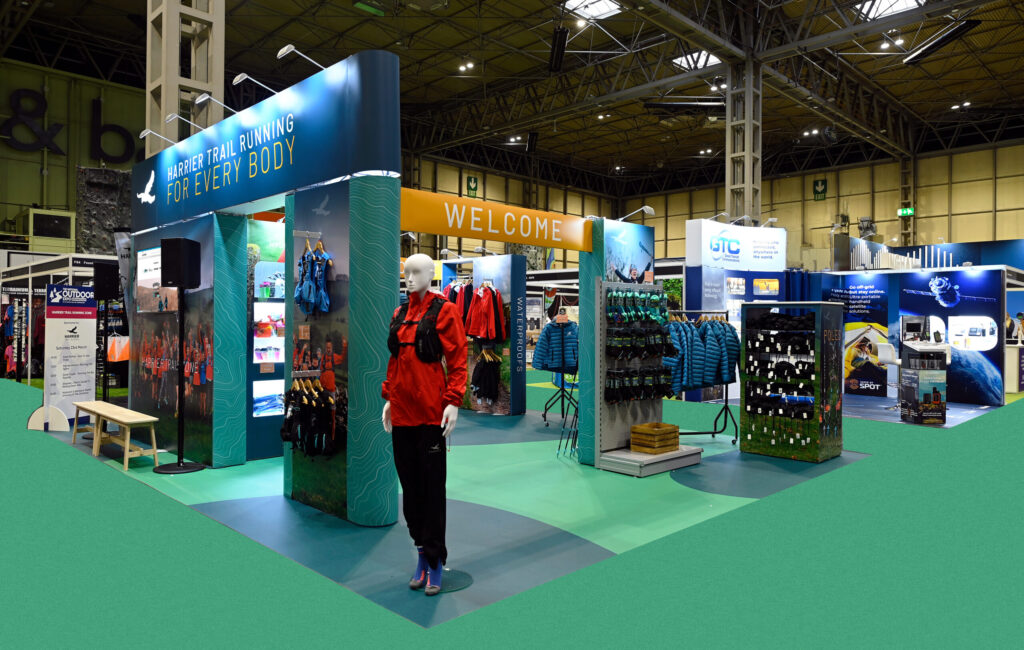Threshold Barriers to Entry Exhibition Stands and How to Avoid Them

In Exhibitions, threshold barriers can refer to both literal and physical barriers, and the “threshold fear” that discourages visitors from approaching the exhibition stand.
Businesses pour significant effort into in-person events to drive sales, create brand awareness and make sales. They craft innovative and eye-catching displays, incorporate interactive games and features, and even invest in hospitality services, all to get visitors to stop and engage. Despite their efforts, one of the greatest challenges for businesses is getting budget-holders onto the stand.
From poor spatial design to unwelcoming teams, there are a range of deterrents that stop guests from engaging with your stand. In this article, we will discuss the most common threshold barriers that work against exhibitors.
What is Threshold Fear?
Threshold fear, a term coined by Elaine Heumann Gurian, refers to the psychological fear of entering an unfamiliar space. This fear can be exacerbated by various factors, referred to as threshold barriers.
The concept is commonly discussed in interior design, where designers want to create a certain mood. For instance, if a lounge features harsh overhead lighting instead of soft side lighting, it could serve as a threshold barrier.
In exhibitions, threshold barriers are the roadblocks which deter visitors from an exhibition stand and prevent interactions. By removing these barriers and creating a welcoming space, businesses can expect more visitors and greater interactions.
Threshold Barriers
Unappealing Design
It may sound obvious, but a poor exhibition stand design can instantly deter guests from approaching the stand.
Too often, exhibitors invest in an exhibition stand space, but not into the display that will fill it, leaving them with an unsatisfactory stand.
Common mistakes in exhibition stand design –
- Too little or too much branding
- Not designing for the target audience
- Ineffective lighting
When designing the stand, it is really important that the branding is visible and instantly recognisable. Too often, exhibitors lack effective branding. Placing logos and branding high up allows visitors to distinguish you from the sea of exhibitors and allows new customers to identify who you are and what you offer. While you want branding to be obvious, you don’t want to go overboard. Swamping the stand with too much branding can create a cluttered, unappealing display. Leave enough negative space to let the brand shine through, so as not to overwhelm and deter budget-holders.
An exhibition stand design can quickly fall flat if not designed for a target audience. Use existing market research on your buyer demographic to tailor your display correctly. A buyer persona can also help when assessing what threshold barriers could come into play. By pre-empting these roadblocks and tailoring your design style, you can guarantee your design will have the right impact.
Additionally, exhibition stand lighting is much more important than many exhibitors realise. Though lighting is well understood in hospitality, retail and even our homes, it is commonly overlooked in exhibition stand design. Dim or badly placed lighting can make a stand or products look unappealing. Instead, use an exhibition stand builder that can tailor the lighting to your products and requirements!
Raised Floor
Raised floors place a literal barrier to entry on your stand, and a lot of the time, they are not a necessary feature. The floors are typically introduced to mark the stand space and hide electrical cables, but they create accessibility issues, a psychological barrier to entry and a tripping hazard.
Quadrant2Design, a UK-based design and build contractor, replaces the raised floor entirely by hiding cables discreetly inside the stand structure and replacing the drab carpet with a high-impact, vibrant graphic floor. Instead of creating a physical barrier on the stand, these floors actively draw visitors in and serve as a signal to enter. After all, why would you place messaging on the stand floor if you didn’t want visitors to read it?
Too Much Open Space
Too much open space can also create a daunting barrier for visitors. This barrier to entry is very easily improved by adding walkways, bringing features, products and structures to the front of the stand, and incorporating welcoming meeting areas. Counters can also be positioned around the exhibition stand, signalling to visitors that they are welcome to approach and engage.
Too Little Space
Likewise, too little space can become a threshold barrier, particularly if the stand space is becoming cluttered or cramped. If you’re working with a tighter stand space, try to maximise the available room. Invest in a display with integrated product showcasing so your floor space can be as open as possible, and incorporate a reception point to invite visitors.
Unwelcoming Teams
Many underestimate the impact that their team dynamics and body language have on potential visitors.
An unwelcoming or disengaged team can be one of the most significant threshold barriers to entry.
If staff members seem too busy, uninterested, or unapproachable, it can discourage visitors from even stepping onto the stand.
To avoid this, it’s crucial to train staff not just in the products and services, but also in their customer interactions. Encouraging a friendly and approachable atmosphere can significantly improve interaction rates. Simple changes like smiling, making eye contact, and actively inviting visitors to explore the stand can make a world of difference. By ensuring that the team is approachable and proactive, businesses can create a welcoming environment that invites budget holders and potential clients to engage.
No Interactive Features
Last but not least, it is important to incorporate interactive features. Sometimes, a simple game or competition can signal to visitors that they are welcome onto the stand.
These interactive elements engage visitors and create a memorable experience that encourages them to spend more time at your stand.
Additionally, offering incentives, such as prizes or giveaways for participation, can further entice visitors and improve their overall impression of your brand. This approach can lead to meaningful conversations and valuable networking opportunities!
In Summary
Though there are a fair few threshold barriers, we hope this article has shown you that they are easy to improve and, better still, avoid in the first place. By creating an approachable display with effective lighting, interactive elements, great use of space and interactive features, you will connect with more clients and foster greater relationships. Don’t forget, you can always reach out to exhibition stand design and build contractors for support with your project!





